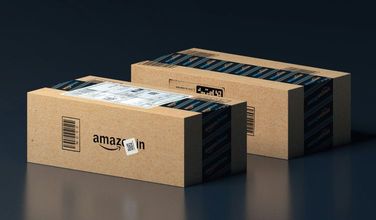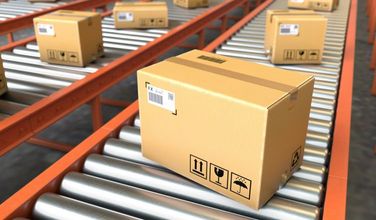How To Start Dropshipping in 2024: A 7-Step Guide
- Published: 8 February 2024
- 15 min read
- Ecommerce
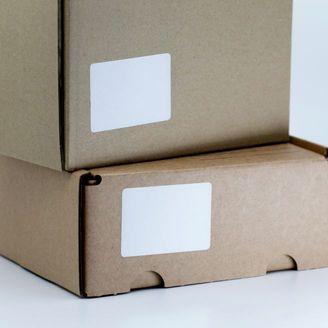

Gabi Bellairs-Lombard
Business Writer
Gabi is a content writer who is passionate about creating content that inspires. Her work history lies in writing compelling website copy, now specialising in product marketing copy. Gabi's priority when writing content is ensuring that the words make an impact on the readers. For Osome, she is the voice of our products and features. You'll find her making complex business finance and accounting topics easy to understand for entrepreneurs and small business owners.
Are you looking for a comprehensive guide on how to get going with dropshipping? Look no further. This article provides a practical blueprint that breaks down the entire process into easy-to-follow steps. Whether dropshipping appeals to you for its low overheads or the convenience of operating from anywhere, we have got you covered. We tackle the intricacies, address the technicalities, and offer solutions to the inevitable challenges. By the end of this guide, you will have a clear action plan that is grounded in real-world knowledge to help you kick-start your dropshipping venture.
Key Takeaways
- Dropshipping is a low-risk ecommerce business model with low setup costs that allows entrepreneurs to sell products online without maintaining inventory, but it faces challenges like low margins, supplier issues, and limited branding options.
- Launching a dropshipping business involves selecting a niche, researching competitors, finding reliable suppliers, building an ecommerce store, choosing a legal business structure, registering the business, and optimising marketing strategies for growth.
- Profitability in dropshipping varies and depends on factors such as product selection, suppliers, marketing, and operations optimisation, with average profit margins ranging from 15%-20%.
What Is Dropshipping?
At a basic level, dropshipping is an order fulfilment method where:
- The seller does not keep products in stock
- They transfer customer orders to a third party, usually a wholesale supplier
- The supplier then ships the product directly to the customer
In this arrangement, the drop-shipper is the retailer, handling the front-end operations of the business, like marketing, the online store, and customer service, while the supplier manages inventory and order fulfilment.
If you need assistance with managing your ecommerce accounting or require guidance on online business registration to kickstart your dropshipping venture, our team is here to help. We specialise in supporting entrepreneurs like you in navigating the intricacies of online business operations and ensuring compliance with regulatory requirements.
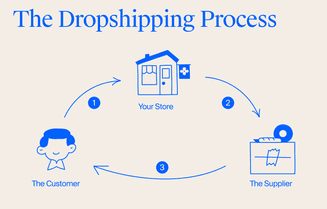
Dropshipping significantly simplifies the process of starting an ecommerce business. The dropshipping business model offers the following benefits:
- Eliminates the need to maintain a physical inventory, reducing the time and resources spent on inventory management and logistics
- Allows drop-shippers to focus on building their own brand and marketing the products to the right audience
- Offers a wide selection of products to sell without the need to pre-purchase items
- Allows businesses to offer trending products and easily change their product list without worrying about unsold inventory
This profitable business model is especially appealing to entrepreneurs due to its:
- Low startup costs
- Elimination of upfront inventory investment, significantly reducing risk compared to traditional retail models
- Low overhead costs, making it possible to run as a home-based business
- Ability to be operated from virtually any location with an internet connection
These factors make dropshipping popular for those looking to start a business with minimal resources.
Despite the advantages, dropshipping comes with challenges, such as:
- Low profit margin due to high competition
- Inventory management issues
- Complexities in shipping when working with multiple suppliers
- Potential supplier errors
- Limited customisation and branding options
However, understanding these challenges and finding effective solutions can lead to a successful dropshipping business.
How To Start a Dropshipping Business: Step-by-Step Process
The complexities of a dropshipping business can be daunting, but fret not! We’ve broken it down into seven manageable steps. From choosing a business idea and doing market research to optimising and marketing your ecommerce business, this step-by-step guide will help you navigate the path to starting your own successful dropshipping business.
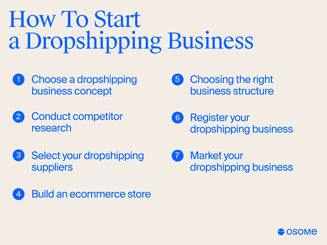
1. Choose a dropshipping business concept
The first step in your dropshipping journey is choosing a business concept. This essentially means selecting a niche — a specialised market segment that caters to a specific group of people with common interests, needs, or problems. Choosing a niche dropshipping business idea allows for focused marketing efforts and a personalised online store shopping experience and helps differentiate your brand from competitors.
Consider utilising tools such as Meta Audience Insights and Google Keyword Planner to measure the demand for a product or market. Google Trends can provide insights into search interest over time, seasonality, geographic concentration, and related queries for a niche. Accessory-heavy niches — products with passionate customer bases — and items that are difficult to find locally can be promising niches.
Additionally, niches with low product turnover or consumable products can lead to repeat customers and a stable revenue strategy. Some of the most profitable dropshipping niches for 2024 include:
- Car accessories
- Sustainability
- Kitchen and dining
- Home and bedroom
- Child and baby
- Home office and office products
- Phone accessories
Selecting an appropriate niche is an indispensable initial step in your journey to successful dropshipping. In the grand scheme of things, it’s not just about selling products — it’s about finding a niche where you can add value, solve problems, and build a loyal customer base.
2. Do competitor and audience research
After deciding on a niche, conducting competitor research is an important next step. This step involves examining the competition within your niche to understand the market landscape. It’s essential to know who your competitors are, what they’re doing right, and where there’s room for you to stand out. This knowledge will help you differentiate your business and optimise your offers and marketing strategies.
An effective place to start competitor research is to examine the organically (not paid-for ads) listed sites on the first page of Google for specific terms related to your niche. The number of linking domains to a competitor’s site can indicate the level of effort needed to compete or outrank them in search results. The authority of competing sites is assessed by metrics like PageRank, with a higher PageRank indicating a higher level of authority and competition.
Qualitative analysis of competitor websites regarding site quality, usefulness, and reputation can reveal opportunities to differentiate and add value. Avoiding niches with high levels of competition or additional challenges, such as high return rates, can lead to a more sustainable business strategy.
Regular competitor analysis is essential to stay informed about product trends and market shifts and identify new business growth opportunities. Embrace competition as a source of inspiration and learning, not intimidation. Remember, every competitor was once a beginner, just like you.
Understanding the audience and target market is crucial when launching a dropshipping business. Conducting thorough research helps identify potential customers' preferences, behaviours, and needs. By knowing the target audience demographics, geographies, and psychographic characteristics, a dropshipping entrepreneur can tailor their product offerings, marketing strategies, and overall business approach to align with customer expectations. This research allows online retailers to select products that resonate with the audience, optimising the chances of successful sales. Additionally, understanding the target market aids in crafting effective marketing messages, choosing suitable ecommerce platforms for promoting your online marketplace, and building a brand that appeals to the right audience. Ultimately, target audience and market research are the hallmarks of more customer-centric and successful dropshipping ecommerce businesses.
3. Select dropshipping suppliers
With a defined niche and comprehensive knowledge of your competitors, the next key step is selecting your dropshipping suppliers. Good dropshipping companies can assist with calculating shipping costs, deciding product markups, and automating fulfilment, all of which are critical to running an effective dropshipping business.
There are various tools and platforms available to help you with an online dropshipping store, including:
- Oberlo: simplifies the process of working with suppliers if you have a Shopify store
- Amazon: a popular platform for sourcing products and working with reliable dropshipping suppliers
- AliExpress: another avenue to explore for sourcing products and working with reliable dropshipping suppliers
These can make it easier for you to find, upload, manage, and sell products in your dropshipping business store. However, it's important to ensure that the supplier marketplace you choose integrates with your chosen ecommerce platform.
An extensive array of third-party suppliers are available for selection, each with its own unique offerings and who can help you with things like calculating shipping costs. From Megagoods, which focuses on consumer electronics, to Spocket, which imports products from suppliers around the world, the options are almost endless. The key is to find a dropshipping supplier that aligns with your business goals, product niche, and customer expectations.
Choosing a dependable supplier should be a priority right from the start. They are your business partners, and their performance directly impacts your customer satisfaction. Remember, in your customer's eyes, you are responsible for delivering the product, not the supplier. Therefore, selecting reliable, trustworthy suppliers and delivering quality products on time is crucial.
4. Build an ecommerce store
Once you have a niche, knowledge of competitors, and suppliers at hand, you’re ready for the next step: building your ecommerce store before officially launching your online business. This is the digital platform where your customers will interact with your business, browse products, and make purchases. Your store should reflect your brand, provide an excellent user experience, and showcase your products effectively.
Shopify is a popular ecommerce platform for building a dropshipping store, offering tools to help with finding products and managing the store. When building your online store, consider creating detailed product descriptions and investing in quality images to effectively showcase the products. Remember, your customers can’t physically touch or see your products, so your product images and descriptions are vital in convincing them to make a purchase.
When you start a dropshipping business, your ecommerce shop should be optimised for mobile shopping, since a significant proportion of online shopping is done via smartphones and tablets. Incorporating customer reviews and trust signals can also increase the credibility of your online store and encourage purchases.
Building an online store is more than just setting up an ecommerce website. It’s about creating a platform that encapsulates your brand, connects with your audience, and drives sales. So, invest time in building a store that looks good and performs well.
5. Choose a business structure
Having established your online store, it’s time to think about the legal side of your business. Choosing the right business structure, such as a sole proprietorship, LLC, or corporation, can protect personal assets and ensure legal compliance for a dropshipping business.
When starting a dropshipping business, your company structure can affect personal liability, taxes, and the ability to scale. Here are some options to consider:
- Sole Proprietorship: The simplest operational structure but does not provide personal asset protection against business liabilities.
- LLC (Limited Liability Company): Offers personal liability protection and sales tax flexibility, making it a popular choice for small businesses.
- Corporation: Provides the most personal liability protection but has more complex tax and legal requirements.
Consider your specific needs and consult with a legal professional to determine the best structure for your dropshipping business, even if it is an online business.
A Corporation provides the highest level of protection and is suitable for businesses looking to manage their personal and business finances, as well as:
- raise capital through the sale of stock
- have a separate legal entity from its owners
- have perpetual existence
- have the ability to transfer ownership through the sale of stock
In some regions, incorporating a company in a specific free zone or international jurisdiction can offer sales tax advantages for an ecommerce business, positively impacting business finances.
Choosing the right structure is about current benefits and future flexibility and scalability as the business evolves. It’s recommended to consult with a business advisor or accountant to determine the most advantageous business framework for your dropshipping business.

6. Register your dropshipping business
Having decided on your business's structure, the next step is to officially register your dropshipping business. This involves obtaining necessary licenses and permits according to local regulations, which is crucial in establishing a legal and legitimate business entity.
Registering your business not only makes it official but also provides legal protection. For instance, if you operate under a business name that is not your own, you’ll need to register it to prevent others from using it. Also, by registering your business, you separate your personal and business assets, offering protection if your business is sued.
Depending on your location and the nature of your business, you may also need permits such as a sales tax permit or a home occupation permit. Regulations vary by country, state, and city, so it’s important to check local laws and regulations. If it starts to feel overwhelming, plenty of professionals can lend a hand with things like company registration and paperwork. So don't stress, you've got this!
Remember, running a successful dropshipping business is not just about selling products and making profits. It’s also about operating within the law, protecting your personal assets, and laying a solid foundation for growth and success.
7. Optimise and market your business
Now that your dropshipping business is officially operational, it’s time to bring in customers. The final step in starting your dropshipping business is to optimise and market your business. Effective marketing and optimisation are what will set your business apart in the competitive ecommerce landscape.
A profitable dropshipping business often includes adding value through educational content such as comprehensive buyers’ guides, product videos, and installation guides. Providing expert advice and guidance within your niche can differentiate your dropshipping store and justify premium pricing.
It’s important to establish a marketing and SEO strategy to compete effectively in the marketplace, especially if your chosen niche has high competition. This could include tactics like:
- Search engine optimisation (SEO)
- Pay-per-click advertising (PPC)
- Email marketing
- Social media marketing
- Content marketing
Remember, a well-planned marketing strategy is what will drive traffic to your online store, convert visitors into customers, and keep those customers coming back for more. So, invest time in building a strategy that connects with your audience, communicates your brand value, and drives sales.
What Are the Benefits of Dropshipping?
Having outlined the process of how to start a dropshipping business, let’s take a step back and look at the bigger picture. Why should anyone consider becoming a dropshipping supplier in the first place? What are the benefits that make this revenue model so appealing?
One key advantage of dropshipping is the low startup cost. Unlike traditional retail businesses, dropshipping eliminates the need to purchase inventory upfront. This significantly reduces the financial risk, making it easier for aspiring entrepreneurs to start their own business. With dropshipping, you can start selling products almost immediately after listing them without waiting for stock to arrive.
Another advantage of dropshipping is the wide range of products you can offer. Since you don’t need to pre-purchase the items you sell, you can offer a wider range of products without worrying about storage space. This also allows you to test new products in the market without the financial risk of investing in inventory that may not sell.
The dropshipping business model offers numerous advantages for dropshipping businesses, such as:
- Scalability and flexibility: as your business grows, you can handle more orders without worrying about physical storage space or additional employees for shipping
- Ability to operate from virtually any location
- Quick adjustment of product offerings in response to market changes
- A low-risk and low-cost business model with significant potential for profit and growth
Common Mistakes When You Start a Dropshipping Business
Despite the myriad benefits of dropshipping, it’s not without its pitfalls. Many new drop-shippers make common mistakes that could easily be avoided with the right knowledge and preparation. Here are some of the most common mistakes when starting a dropshipping business and how to avoid them.
A frequently made error is having unrealistic expectations about dropshipping, believing it will be a quick and easy way to make money without acknowledging the hard work and time required to succeed. Just like any other business, dropshipping requires dedication, effort, and patience.
An additional commonly seen mistake is spending too much time on research, leading to analysis paralysis, which prevents them from actually starting their business or online stores. While doing your homework is important, don’t let it hold you back from taking action.

New drop-shippers sometimes make the mistake of selling too much variety instead of focusing on a niche. This can dilute marketing efforts and brand identity, making it harder to attract specific customer segments.
Conversely, a number of drop-shippers choose inappropriate niches, either due to lack of interest or poor market research, which can result in low sales and the need to pivot to a different niche, which can be costly and time-consuming.
Choosing unreliable suppliers is another common mistake. Remember, your suppliers are your business partners, and their performance directly affects your customer satisfaction.
Lastly, disregarding customer feedback and reviews can harm the reputation of your business. Customers associate their purchase experience with the drop-shipper, not the supplier, so always strive for excellent customer service.
How Profitable Is a Dropshipping Business?
A common question around dropshipping is: “How profitable is it?” The answer, as with most businesses, is that it depends. Profitability in dropshipping depends on a variety of factors, including:
- The products you choose to sell
- Your suppliers
- Your marketing strategies
- Your pricing strategy
- Your customer service
- Your ability to manage and optimise your operations
Considering these factors and making informed decisions can greatly increase your chances of running a profitable dropshipping business. It's also important to know how it works: as the online retailer, you set the retail price for the customer to pay and pay the supplier the product's wholesale price.
Average dropshipping earning ratios typically range between 15%-20%, but success hinges on product choice and market conditions. A common dropshipping strategy suggests dividing the product price into one-third for product cost, one-third for advertising, and one-third for profit, though this may oversimplify the pricing complexities.
Implementing strategies such as the following can allow you to generate higher profit margins in dropshipping:
- Upselling
- Negotiating better prices with suppliers
- Automating operations
- Establishing a brand
Dropshipping on marketplaces like Amazon and eBay involves dealing with commission fees and other charges, which can impact net profits. However, by implementing these strategies, you can maximise your profits.
The income levels for drop-shippers can vary significantly. While beginner drop-shippers might make anywhere from $0 to $1000 per month, intermediates might make $1000 to $5000, and advanced drop-shippers could earn up to $10,000 monthly. So, while dropshipping can certainly be profitable, it’s not a get-rich-quick scheme. It requires effort, strategic planning, and a customer-centric approach to truly reap the benefits.
Summary
We’ve covered a lot of ground in this comprehensive guide to dropshipping. From the basics of what dropshipping is to the step-by-step process of starting your own dropshipping business, you now have the tools and knowledge to embark on your own dropshipping journey.
Whether you’re an aspiring entrepreneur looking for a low-risk business model or an established business owner looking to diversify your income streams, dropshipping offers a unique opportunity. With its low setup costs, scalability, and flexibility, dropshipping is a business model worth considering. But remember, like any business, it requires commitment, hard work, and a customer-centric approach to succeed. Start small, stay focused, learn from your mistakes, and who knows? Your dropshipping business could be the next big thing in ecommerce.
FAQ
How can a beginner start dropshipping?
To start dropshipping as a beginner, choose a niche, find a reputable supplier, build an online store, and market your business. This involves selecting products to sell, finding a dropshipping supplier, and setting up an online store, among other business tasks.
Can I start a dropshipping business with $100?
Yes, you can launch a dropshipping business with $100 by utilising advertising in social media platforms, content marketing, and influencer partnerships to promote your business effectively. You can turn this modest investment into a successful and profitable venture with diligence and tactical efforts.
How profitable is dropshipping?
Dropshipping can be profitable, with dropshippers making between a 20% and 30% profit from each sale or up to $100,000 per year on average. However, the profitability depends on the products sold and marketing efforts.
How much does it cost to start a dropshipping business?
You can start dropshipping with as little as $50 to $100 for initial expenses such as setting up the store and marketing efforts. Remember that the cost may vary based on individual needs and goals.<br>
What is dropshipping, and how does it work?
Dropshipping is a method where the seller doesn't keep products in stock but transfers customer orders to a third-party supplier who ships the product directly to the customer. The seller focuses on marketing and customer service, while the supplier handles inventory and order fulfilment.
Get expert tips and business insights
By clicking, you agree to our Terms & Conditions, Privacy and Data Protection PolicyWe’re using cookies! What does it mean?




